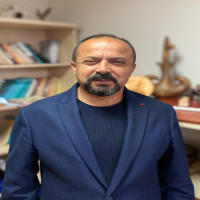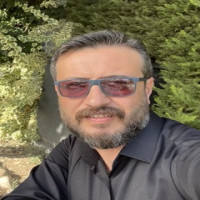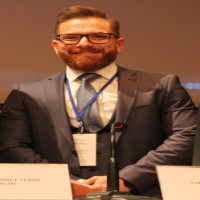Makaleler
Yayın Değerlendirme
Issue Reviewers


 0000-0002-1729-0265
0000-0002-1729-0265




 0000-0003-0421-3743
0000-0003-0421-3743
Aim & Scope
İdil-Ural Araştırmaları Dergisi (The Journal of Volga-Ural Studies) is an internationally refereed journal in which scientific articles in the field of social sciences about Volga-Ural Region are published.
In the İdil-Ural Araştırmaları Dergisi a) authentic articles that contribute to the field of Volga-Ural studies and fill a gap in the field b) introductory articles and reviews of publications concerning the field of Volga-Ural studies c) translations/quotations that would contribute to the field of Volga-Ural studies are published.
Academic manuscripts should not have been published in any other publication or should not be in the publishing process of any other publication so as to be published in the İdil-Ural Araştırmaları Dergisi. The proceedings which have been presented in an academic conference can be published only if this situation is clearly stated.
Publishing language of the İdil-Ural Araştırmaları Dergisi is Turkish; with the approval of the editorial board the manuscripts written in other languages such as English, Russian and Turkic languages can also be assessed and published. The amount of such content would not exceed %30 of that those written in Turkish.
İdil-Ural Araştırmaları Dergisi is published twice yearly as in summer and winter (June-December) and one volume is composed every year.
Every kind of scientific and legal responsibility of the manuscripts published in the İdil-Ural Araştırmaları Dergisi pertains to writers, and copyrights pertain to the İdil-Ural Araştırmaları Dergisi. The manuscripts published in the journal are not allowed to be published anywhere or be copied partially or wholly without permission of Editorial Board. It can be cited on condition of providing reference from articles and other data (statistics, tables, photos, etc.).
Author Guidelines
Assessment of Manuscripts:
The manuscripts that have been sent to the journal are first assessed in terms of the consistency to the publishing principles of the journal. The manuscripts are not fulfilling the publishing principles of the journal will not be peer reviewed or assessed for publication.
The manuscripts that are in the process of assessment are sent to two reviewers determined by Editorial Board thereby hiding the names of writers. During the assessment phase any information about the identity of writer/writers is not given to the reviewers and the names of the reviewers are not disclosed to the authors. If one of the referee reports is positive and another is negative, the manuscript is sent to the third referee and/or Editorial Board can give the last decision by means of assessing the reports. The authors consider reviews, suggestions and correction requests of the referees and Editorial Board. If any, they can notify their disagreements to Editorial Board in a separate report with justification. The referee reports are hidden for a period of five years.
The issues of the manuscripts which are chosen for publishing are determined by the Editorial Board.
Translated articles are subject to the same publication process as copyrighted articles.
Non-critical articles can be published with the approval of the editor without being sent to the referees.
Spelling Rules:
The articles that are to be sent to the journal should be prepared in both MS Word (.doc or .docx) and PDF (.pdf) formats.
A) Page Layout
Typefont: Times New Roman
Font size: 11 point
Font size in footnote: 9 point
Line spacing: Single
Paragraph spacing: 6 pt
Indent : 1 cm
Left margin: 3 cm
Right margin: 2 cm
Top margin: 3 cm
Bottom margin: 2 cm
B) Title: It should be written in bold capital letters and should not exceed 12 words. The English translation of the title should be in lowercase letters and below the Turkish title. (The second language of the articles written in English and Russian must be Turkish.)
C) Writer’s Name: Author’s name/s should be written below the title and the information about job title, institution address and email should be indicated with an asterisk that would be attached to the end of the name.
D) Abstract: Abstracts of the article should not exceed 200 words. In the abstract, resources, tables and figures should not be indicated. Below the abstract there should be keywords composed of minimum 5 words and maximum 8 words. The abstract and keywords should be translated into English. The abstracts of the articles, which are not written in Turkish, should also be prepare in English and Turkish. At the end of each article, an extended summary of at least 500 words in Russian and 5 word keywords should be included.
E) Citation and Giving Reference: Exact quotations which are not longer than three lines should be placed in inverted commas. Longer quotations than three lines should be indented 1,25 cm from the left and right margin in a separate paragraph, font size should be ranged as 10 point. The references should be indicated in a text in the layout below stated.
Single Author: (Türkoğlu, 2000:101)
Two Authors: (Demir ve Yılmaz 2005: 4)
More than one work of the same author in the same year: (Arık, 2007a; Arık, 2007b)
More than one resource: (Türkoğlu, 2000:60; Maraş, 2002:21)
More than one author: (Zheltov vd., 2009:7) The name of the first author should be written.
Citation from an unseen resource: (Clauson, 1962; Tekin, 2003:19’dan)
To refer to internet pages in a text the above mentioned layout must be followed. In resources which author’s name is not available, title of the text should be written instead of the author’s name. Date accessed should be written instead of the date.
Footnotes should be used only for explanations and the above mentioned in-text referencing style should be used while providing a reference to the information in footnotes.
F) References: By the end of the text in an article should be listed in an alphabetical order by surname of authors.
Book:
Türkoğlu, İsmail. (2000). Rusya Türkleri Arasındaki Yenileşme Hareketinin Öncülerinden Rızaeddin Fahreddin. İstanbul: Ötüken Neşriyat.
Ceylan, Emine (1997). Çuvaşça Çok Zamanlı Ses Bilgisi. Ankara: TDK Yayınları.
Article:
Alp, Alper. (2013). Rus Çarlığında Müftülüklerin Kuruluşu ve Gelişimi. Gazi Akademik Bakış, 13, s. 117-126.
Devlet, Nadir (1983). Sovyetler Birliğindeki Türkleri Ruslaştırmada Yeni Adımlar. Türk Dünyası Araştırmaları, 28, s. 1-10.
Internet:
The references to the texts in the internet should be written in bibliography in accordance with the layout below.
Surname, Name. (Date accessed). Title. Page/Website name. page. link. (When author’s name is not available in resources, title of the text should be replaced with author’s name and the same layout should be followed.)
Sound and Video Records:
With regard to the references to the sound and video resources, surname and name of a person whose contribution would be highlighted (producer, director, scenarist, actor/actress, writer, soloist, etc. ) and then his/her position, broadcast date, name of work, other people or institutions that contribute to work, format of work (VCD, DVD etc.)
Sınav, Osman. yön. (2012). Uzun Hikaye. Sen. Yiğit Güralp. Oyun. Kenan İmirzalıoğlu, Tuğçe Kazaz, Ushan Çakır, vd. DVD. Sinegraf Film.
Ethical Principles and Publication Policy
PUBLICATION ETHICS
Publishing processes applied in İdil-Ural Research Journal are the basis for the development and distribution of information in a neutral and respected way.
The processes implemented in this direction are directly reflected in the quality of the work of the authors and the institutions supporting the authors.
Refereed studies embody and support the scientific method. At this point, it is important that all stakeholders of the process (writers, readers and researchers, publishers, referees and editors) comply with the standards for ethical principles.
Within the scope of İdil-Ural Research Journal publication ethics, all stakeholders are expected to have the following ethical responsibilities.
IThenticate, Turnitin or intihal.net can be used for ethical control and prevention of unethical initiatives.
Within the framework of ethical rules; Researches requiring Ethics Committee Permission for evaluation in the journal are as follows:
Any research carried out with qualitative or quantitative approaches that require data collection from participants using survey, interview, focus group work, observation, experiment, interview techniques,
Use of humans and animals (including material / data) for experimental or other scientific purposes,
Clinical research on humans,
Researches on animals,
Retrospective studies in accordance with the law of protection of personal data.
In this context, in the studies to be evaluated in our journal;
In the case reports, it should be stated that the “informed consent form” was taken,
Obtaining and expressing permission from the owners for the use of scales, questionnaires and photographs belonging to others should be obtained and expressed.
It should be noted that the copyright regulations are complied with for the ideas and works of art used.
Attention should be paid to the compliance of articles with research and publication ethics, and the international standards for the authors of the COPE (Committee on Publication Ethics) should be taken into consideration with the recommendations of the ICMJE (International Committee of Medical Journal Editors).
İdil-Ural Research Journal is committed to upholding the highest standards of publication ethics and pays regard to Principles of Transparency and Best Practice in Scholarly Publishing published by the Committee on Publication Ethics (COPE), the Directory of Open Access Journals (DOAJ), the Open Access Scholarly Publishers Association (OASPA), and the World Association of Medical Editors (WAME) on https://publicationethics.org/resources/guidelines-new/principles-transparency-and-best-practice-scholarly-publishing
All parties involved in the publishing process (Editors, Reviewers, Authors and Publishers) are expected to agree on the following ethical principles.
All submissions must be original, unpublished (including as full text in conference proceedings), and not under the review of any other publication synchronously. Each manuscript is reviewed by one of the editors and at least two referees under double-blind peer review process. Plagiarism, duplication, fraud authorship/denied authorship, research/data fabrication, salami slicing/salami publication, breaching of copyrights, prevailing conflict of interest are unnethical behaviors. All manuscripts not in accordance with the accepted ethical standards will be removed from the publication. This also contains any possible malpractice discovered after the publication. In accordance with the code of conduct we will report any cases of suspected plagiarism or duplicate publishing.
İdil-Ural Research Journal adheres to the highest standards in research ethics and follows the principles of international research ethics as defined below. The authors are responsible for the compliance of the manuscripts with the ethical rules.
- Principles of integrity, quality and transparency should be sustained in designing the research, reviewing the design and conducting the research.
- The research team and participants should be fully informed about the aim, methods, possible uses and requirements of the research and risks of participation in research.
- The confidentiality of the information provided by the research participants and the confidentiality of the respondents should be ensured. The research should be designed to protect the autonomy and dignity of the participants.
- Research participants should participate in the research voluntarily, not under any coercion.
- Any possible harm to participants must be avoided. The research should be planned in such a way that the participants are not at risk.
- The independence of research must be clear; and any conflict of interest or must be disclosed.
- In experimental studies with human subjects, written informed consent of the participants who decide to participate in the research must be obtained. In the case of children and those under wardship or with confirmed insanity, legal custodian’s assent must be obtained.
- If the study is to be carried out in any institution or organization, approval must be obtained from this institution or organization.
- In studies with human subject, it must be noted in the method’s section of the manuscript that the informed consent of the participants and ethics committee approval from the institution where the study has been conducted have been obtained.
Price Policy
İdil Ural Araştırmaları dergisi herhangi yayın ücreti talep etmemektedir.

